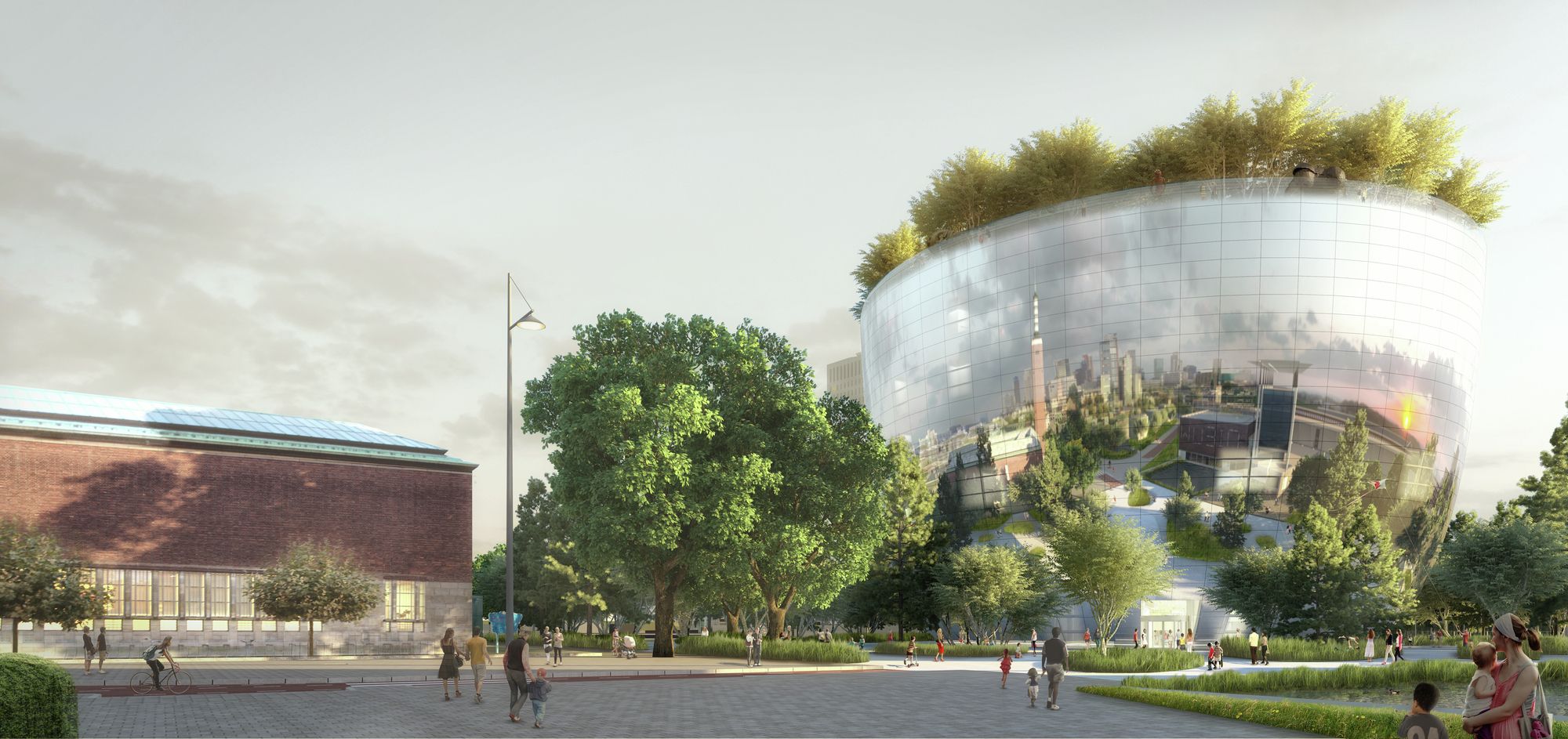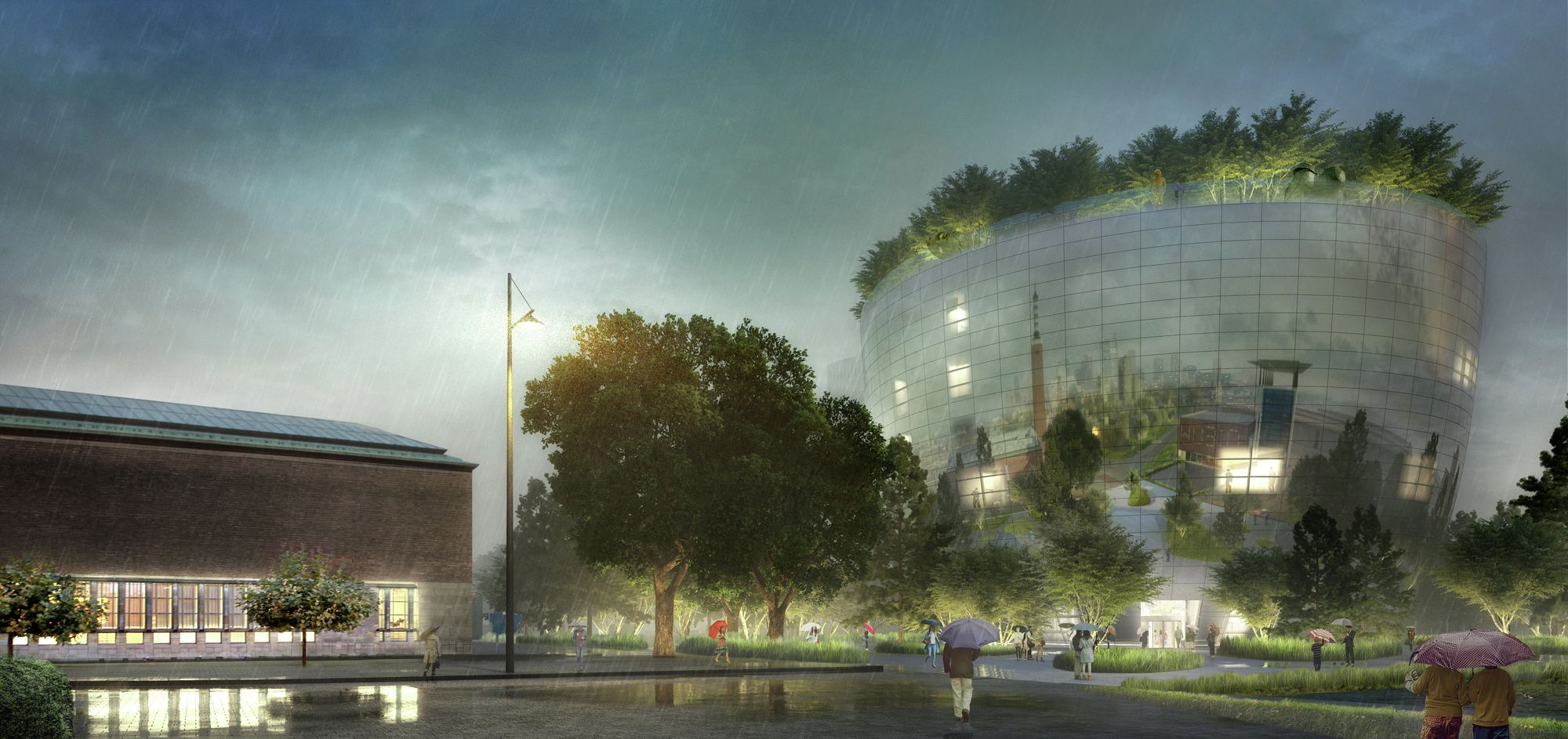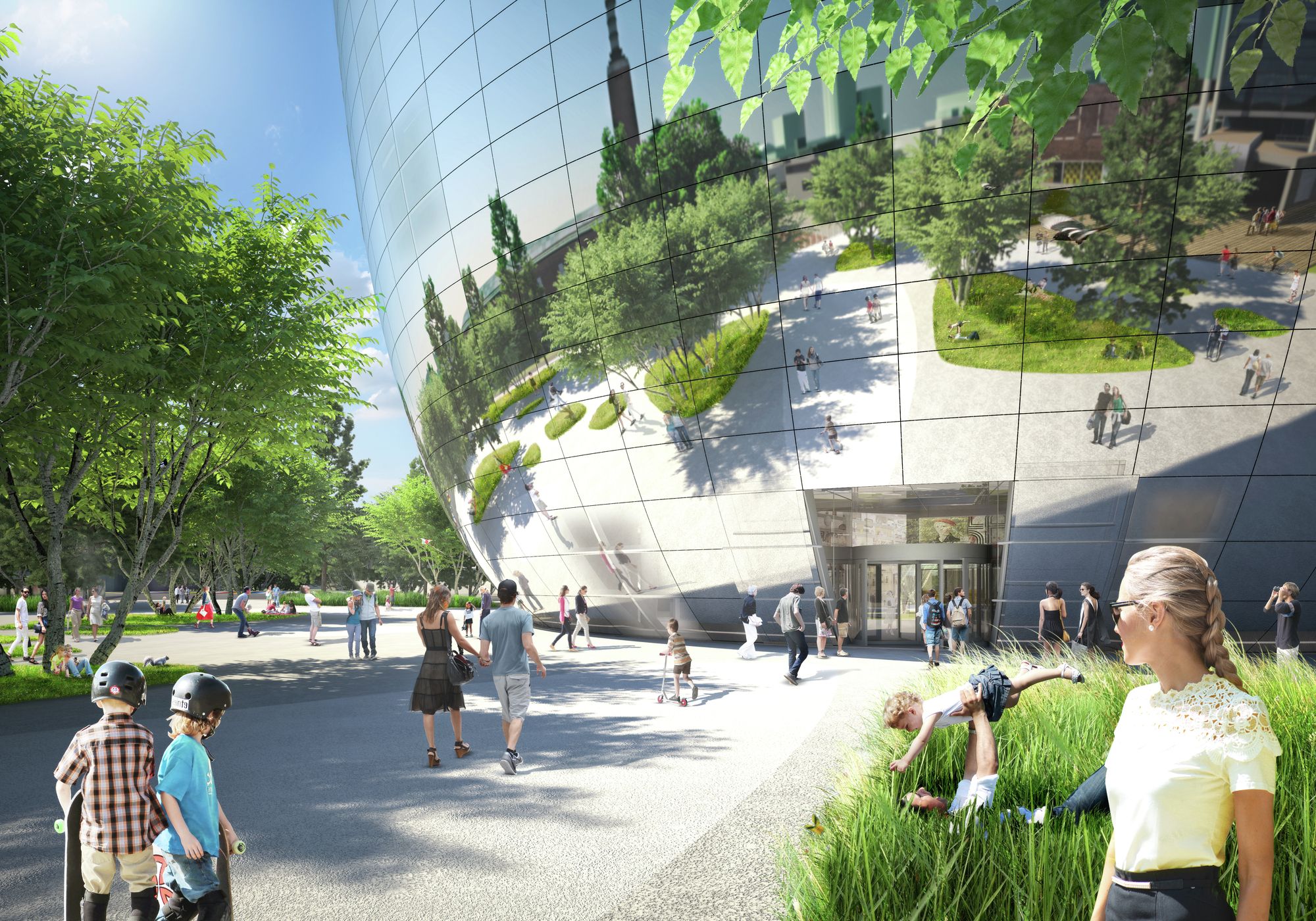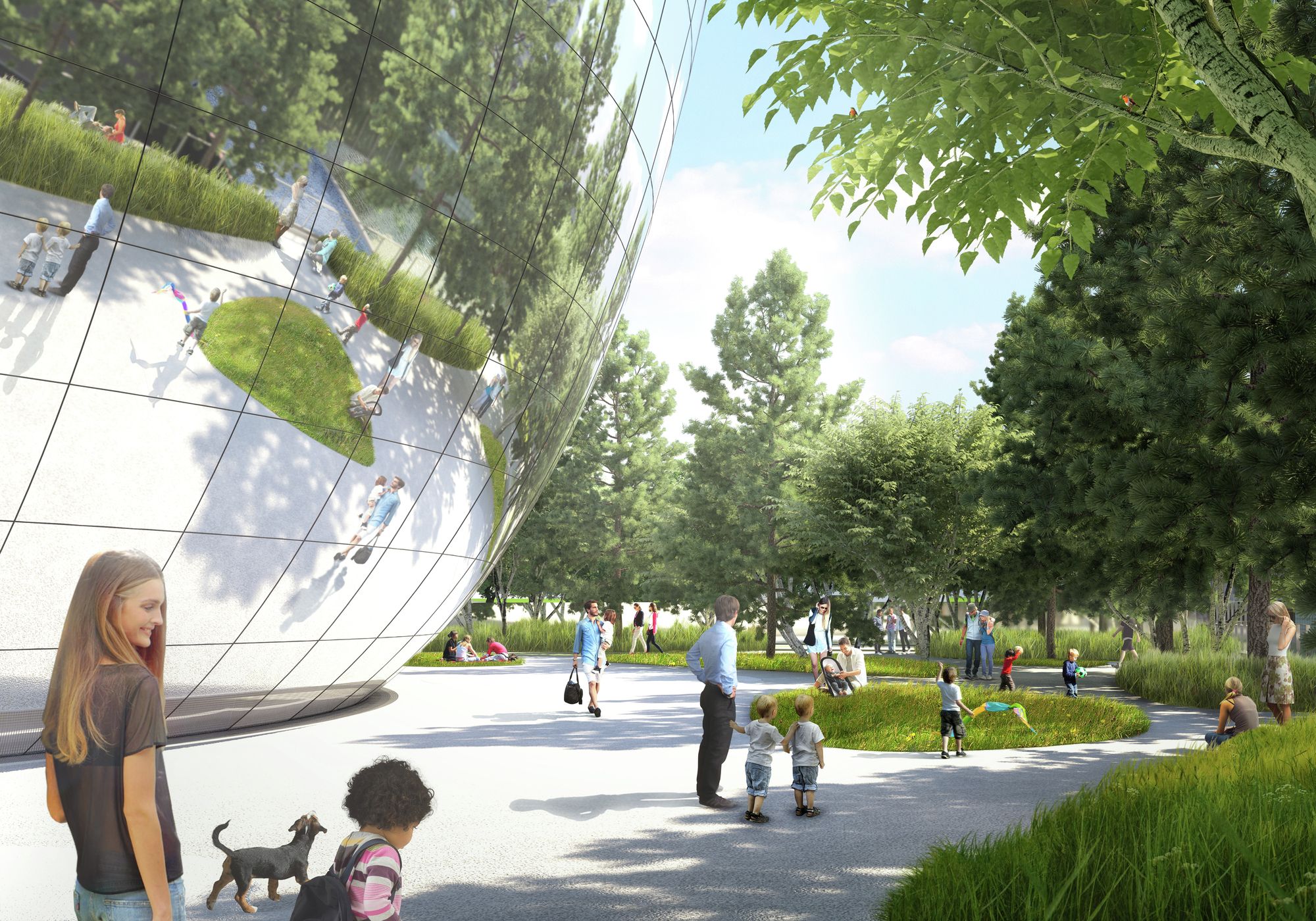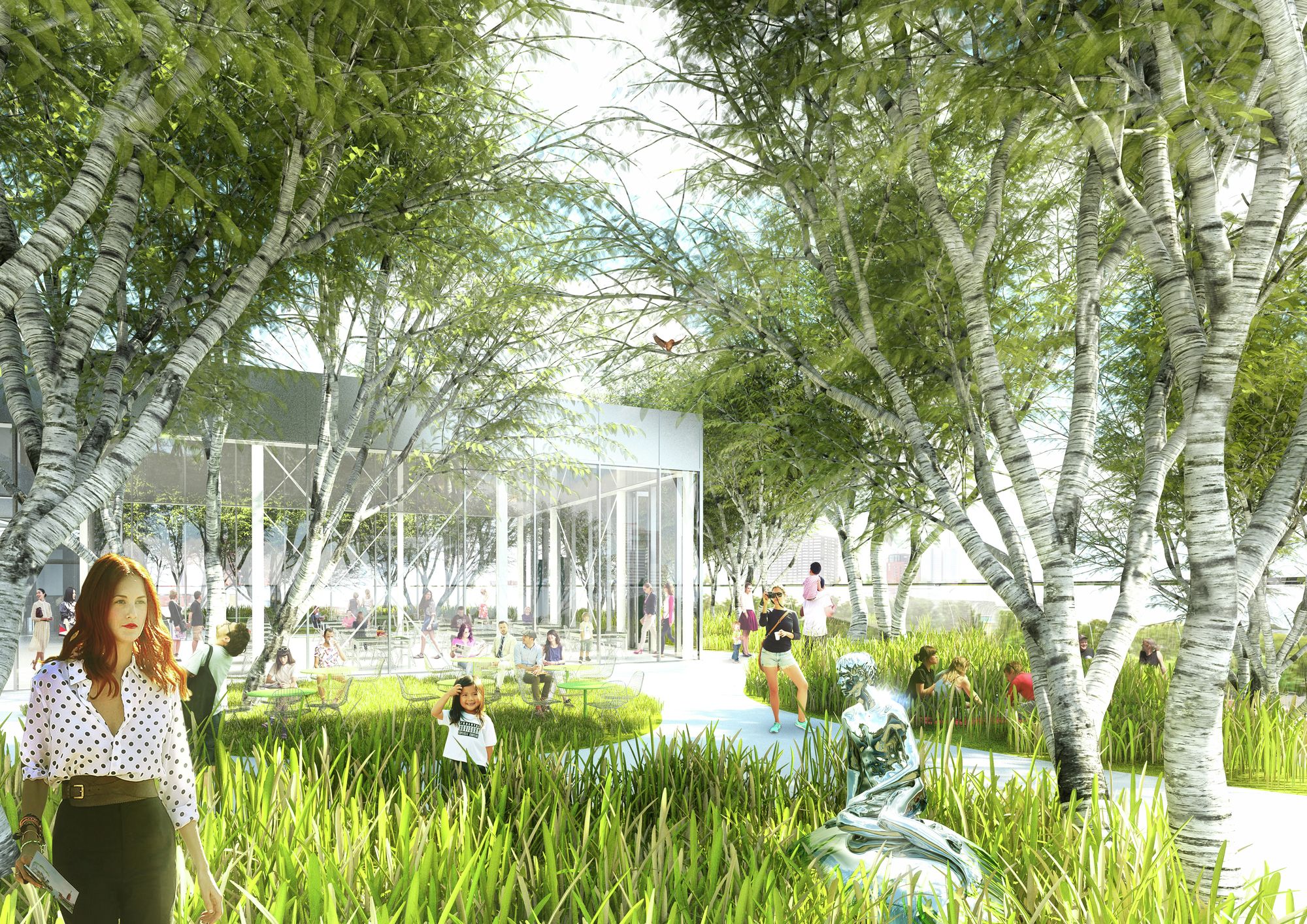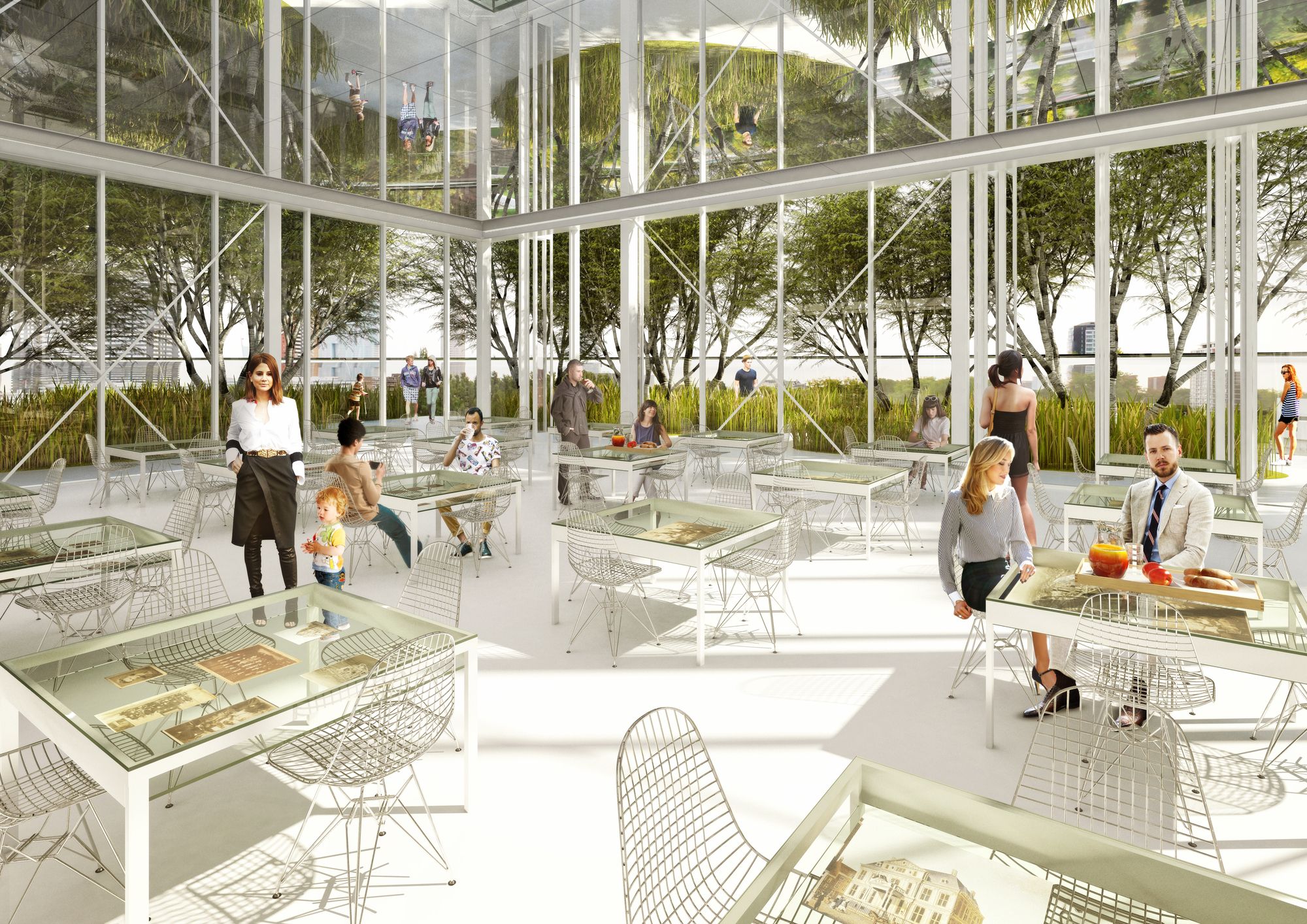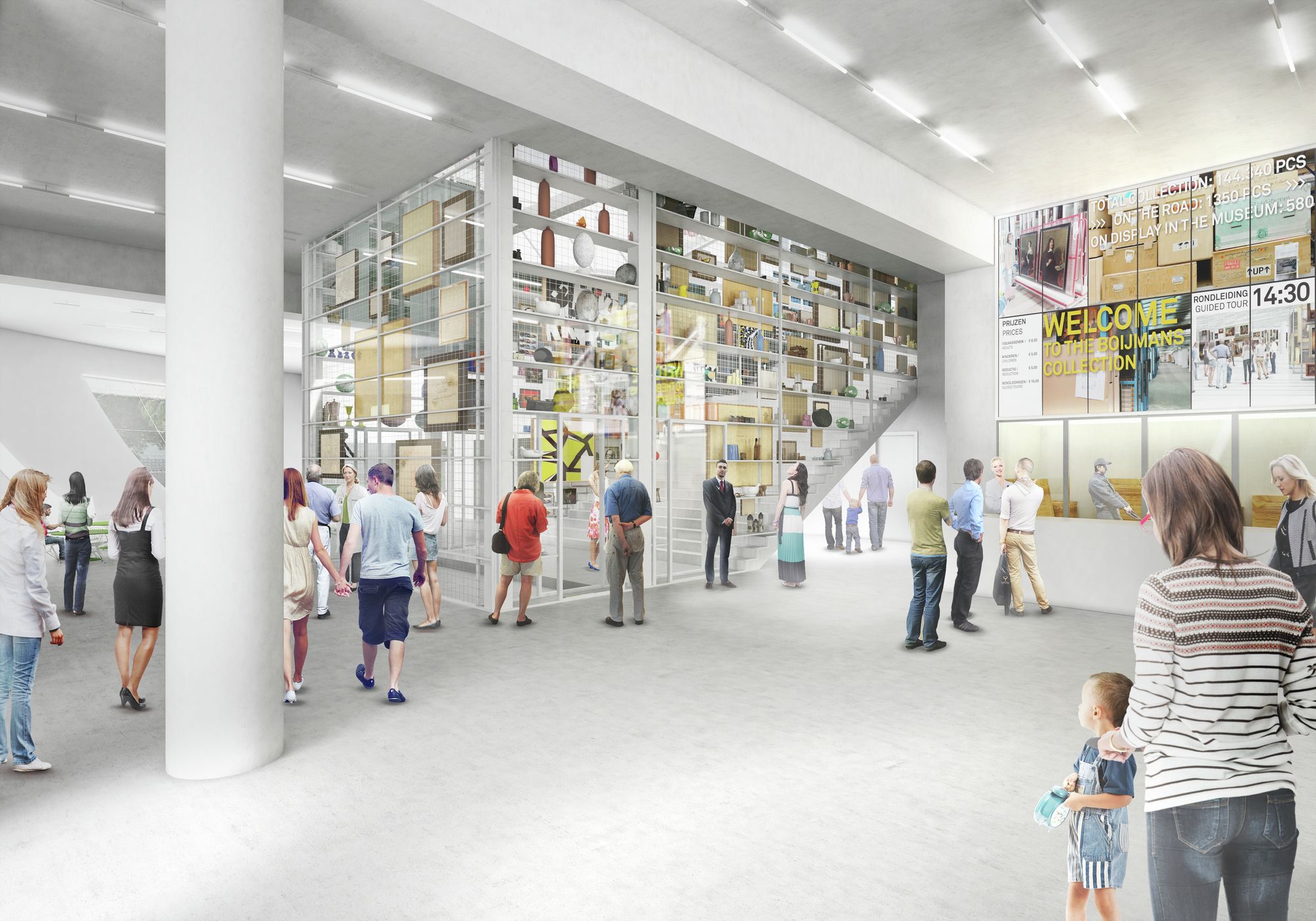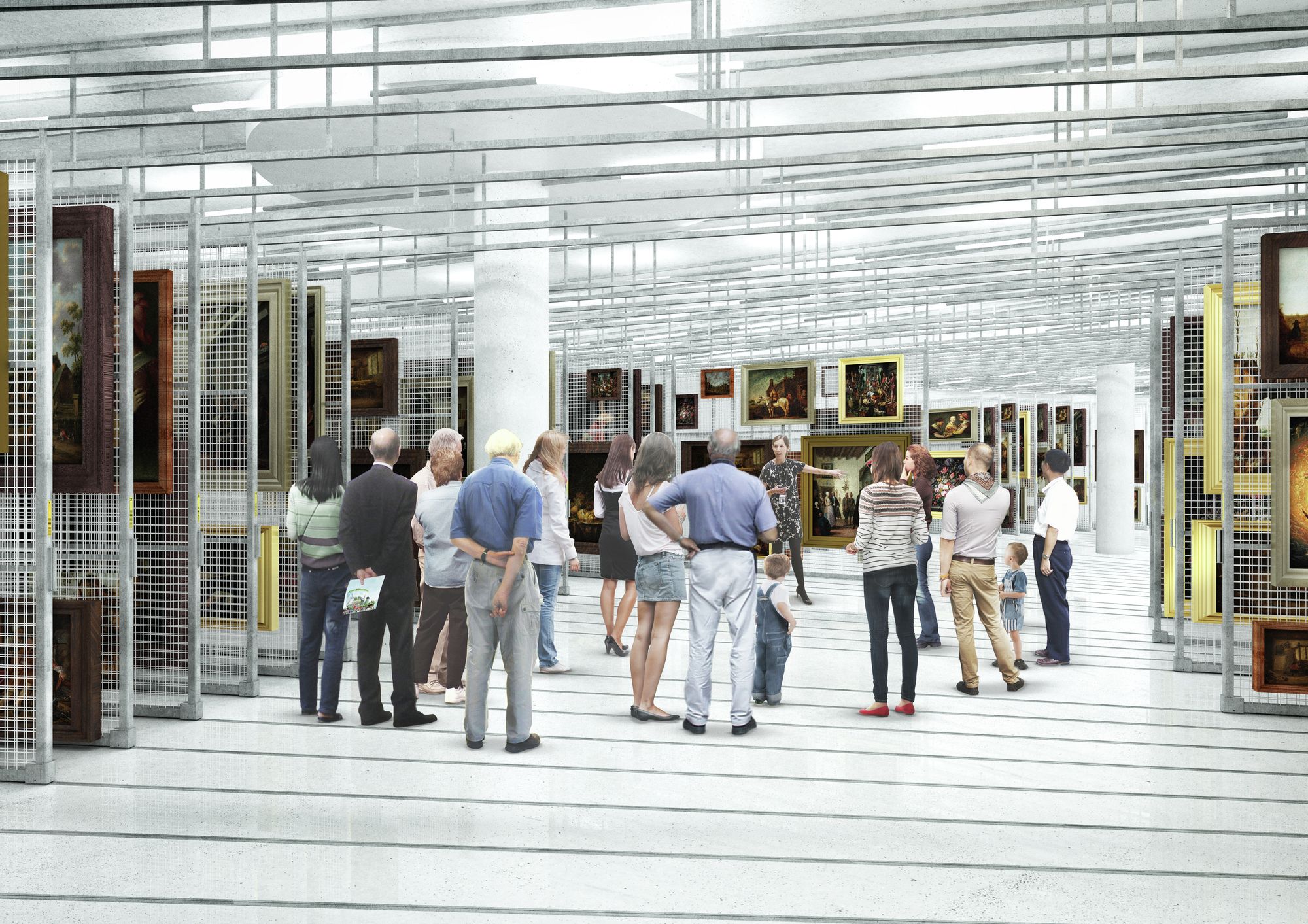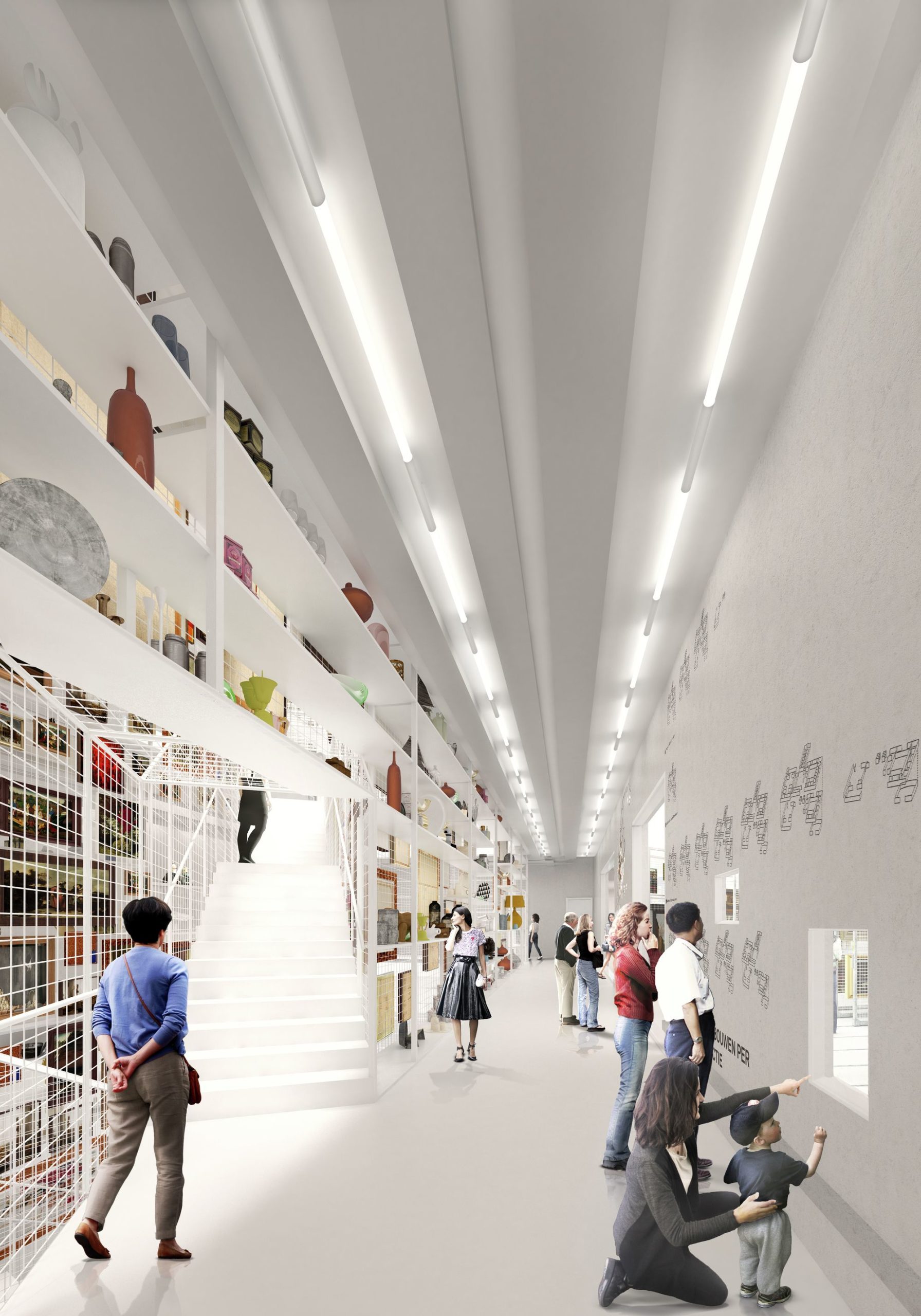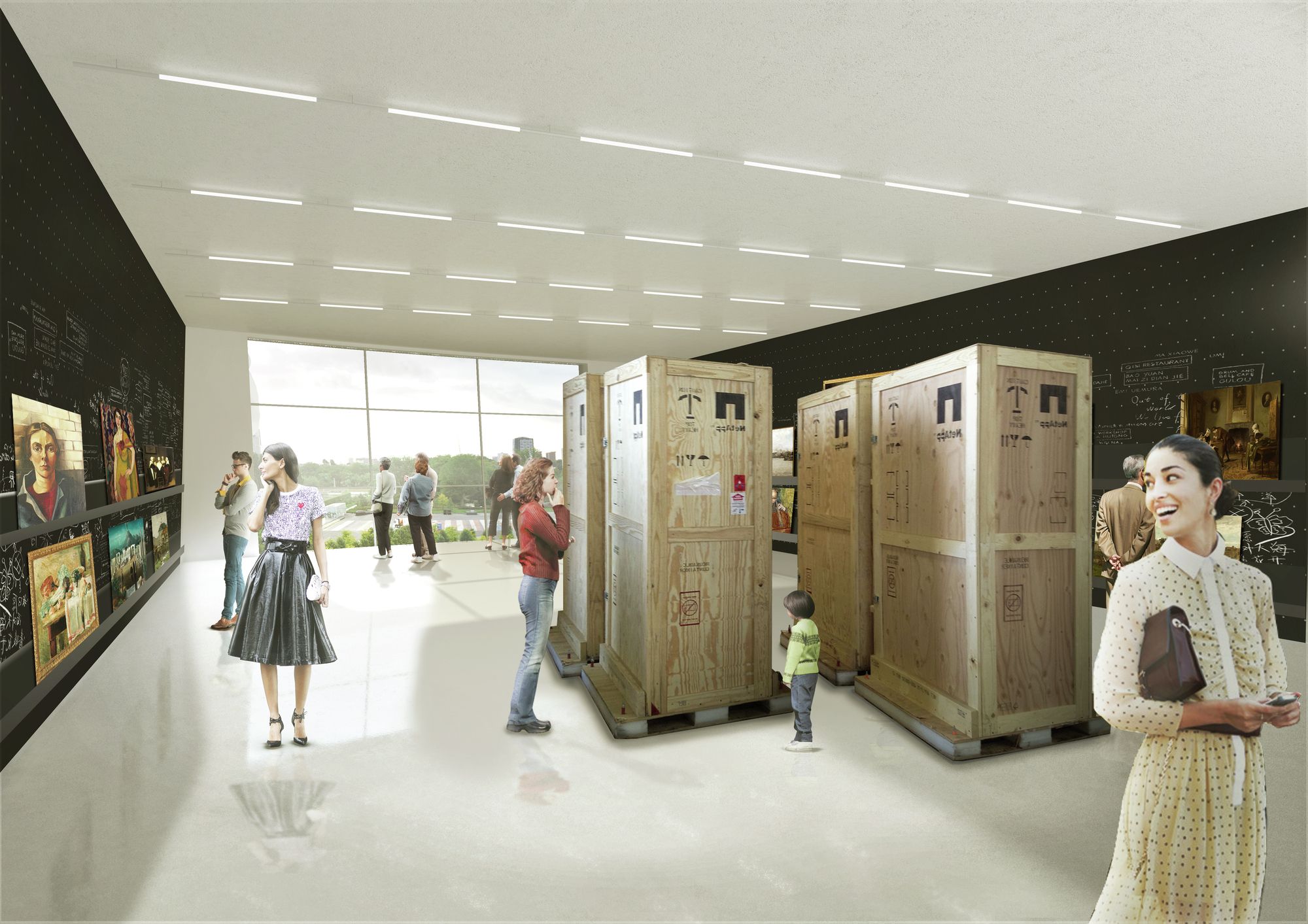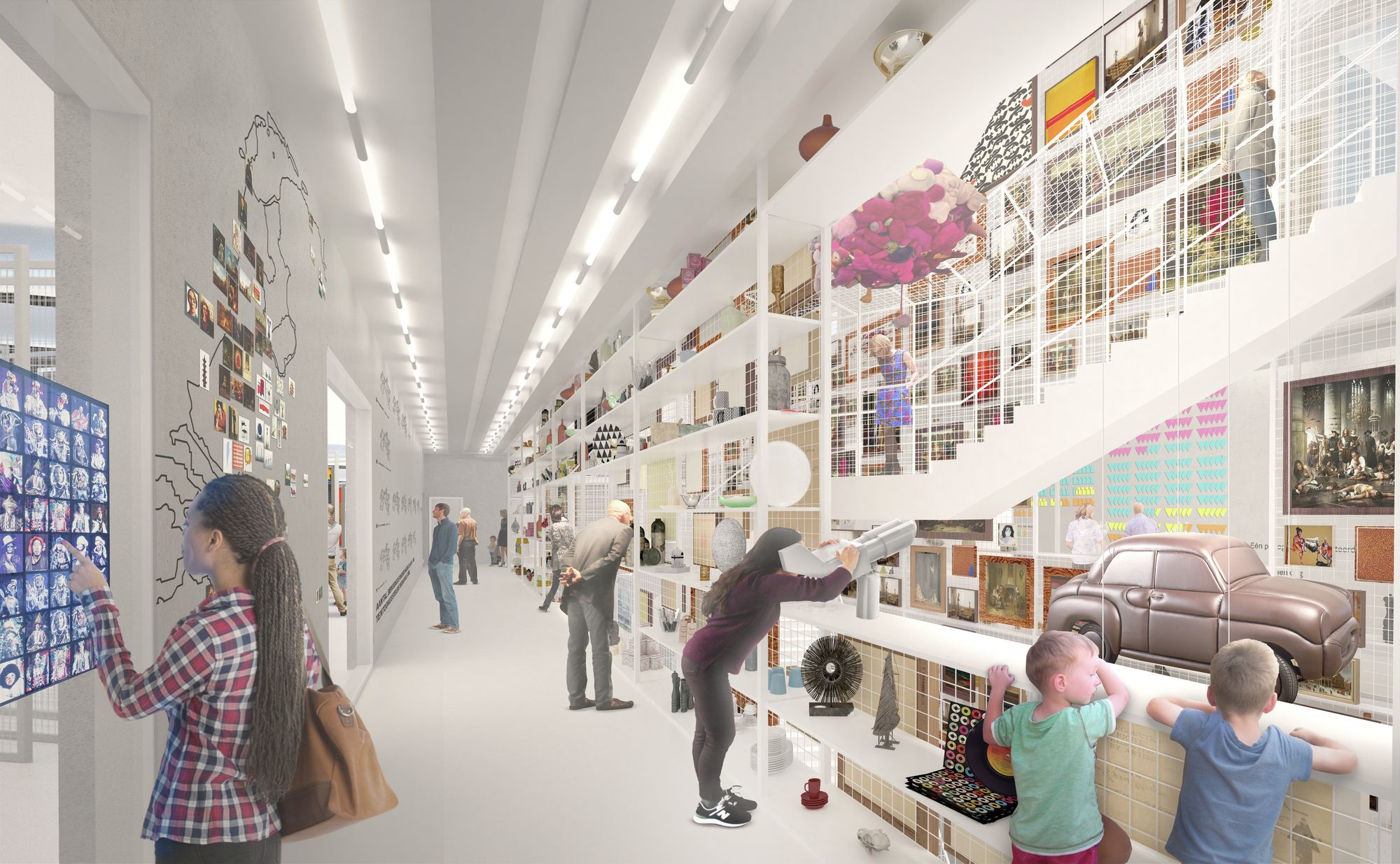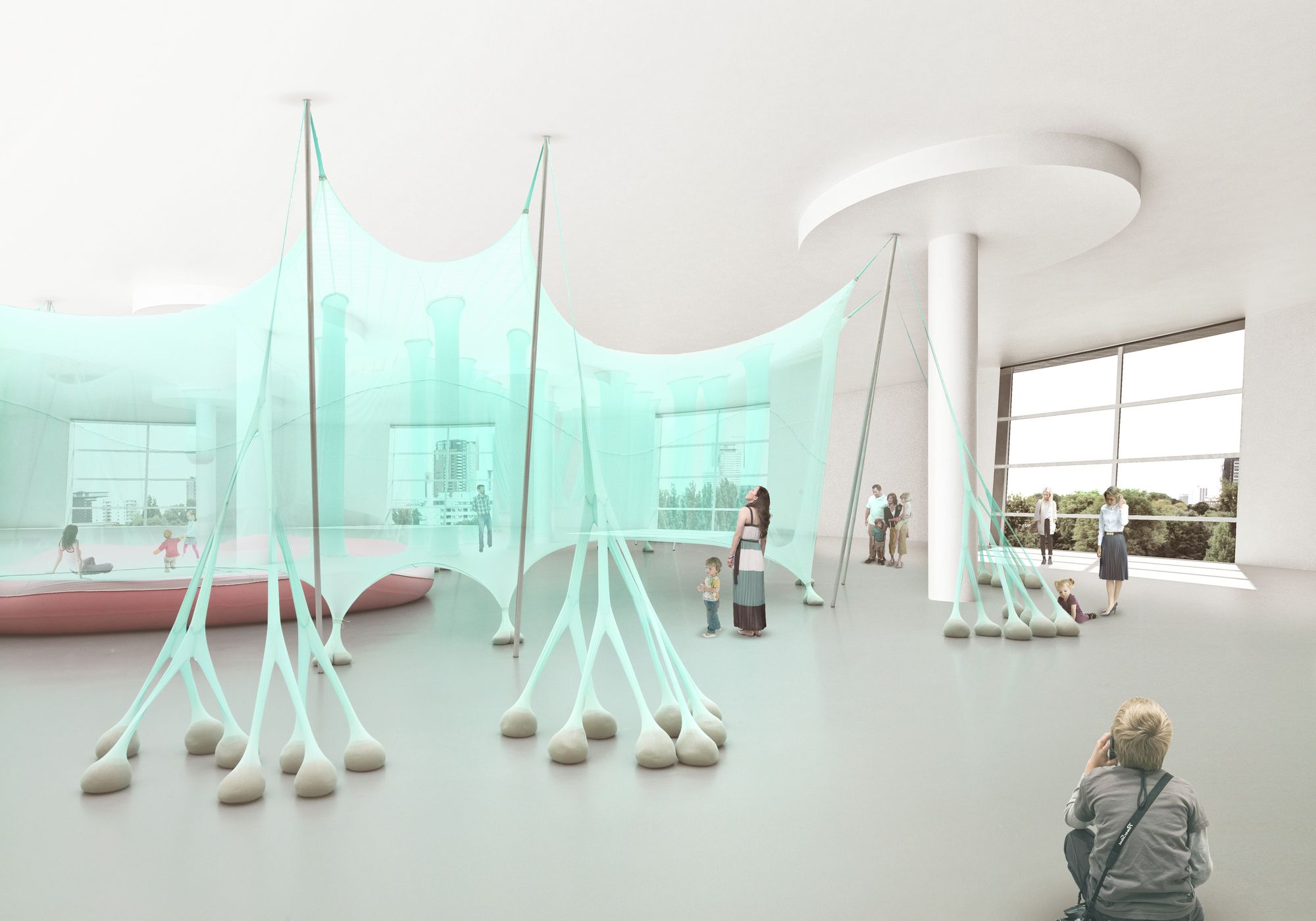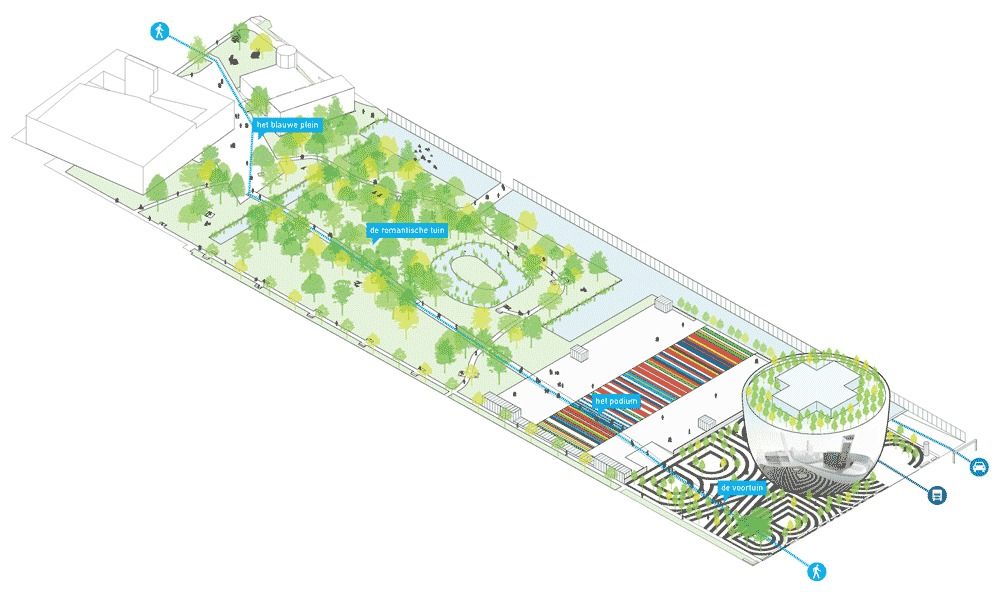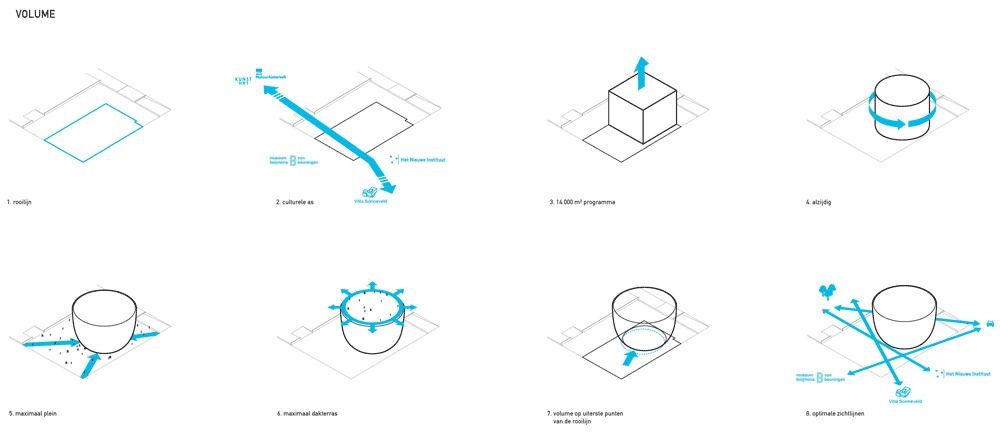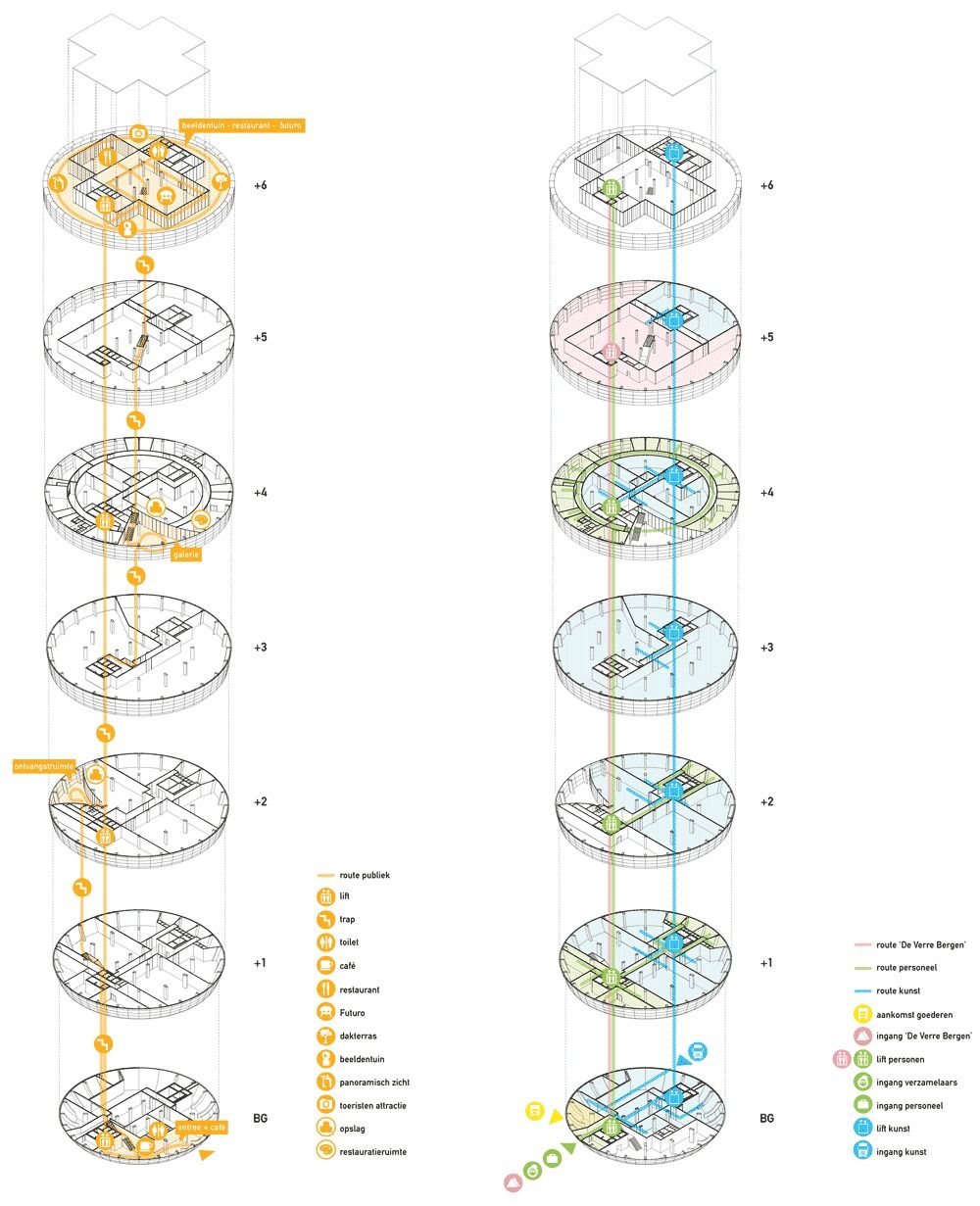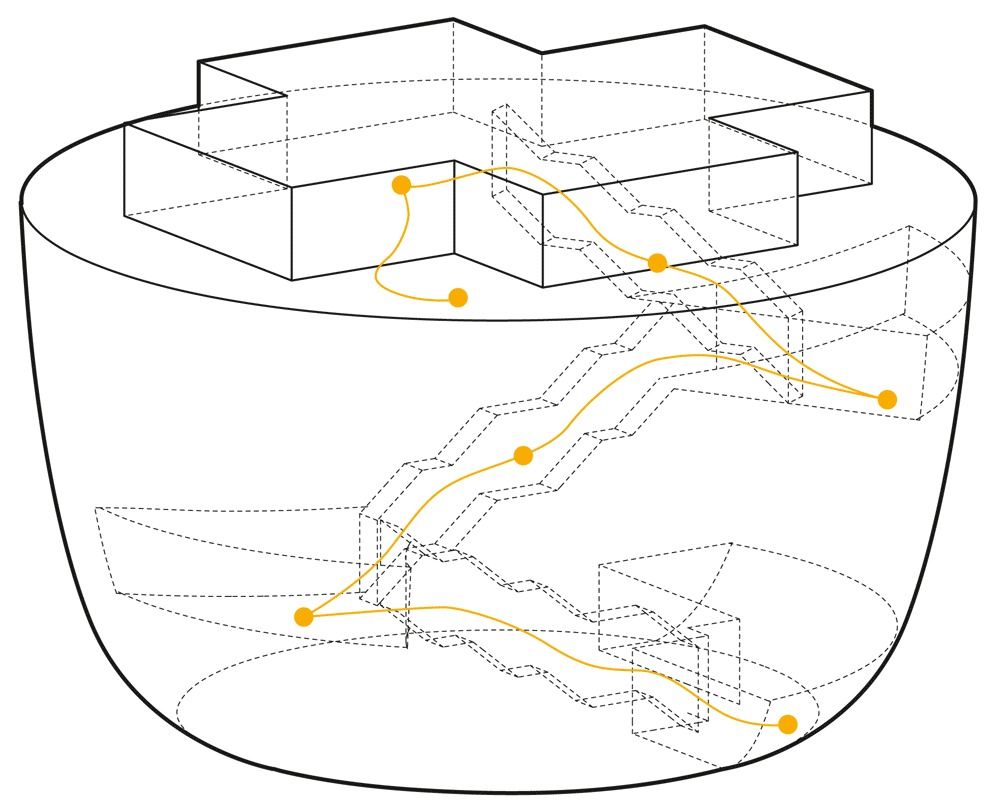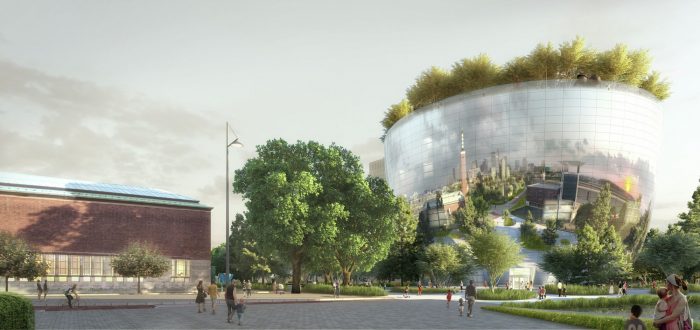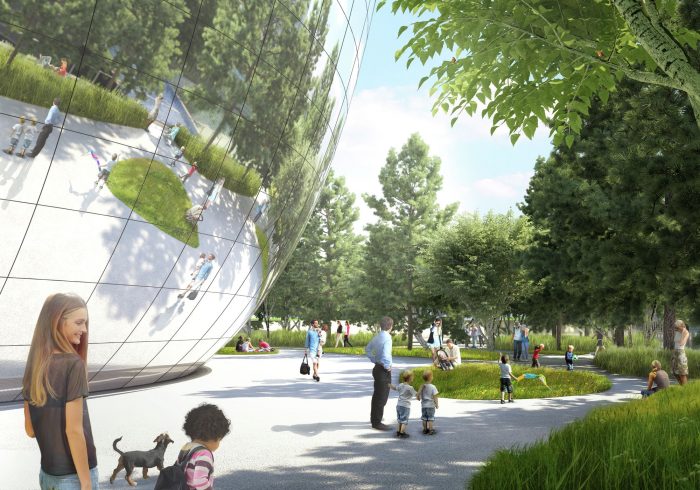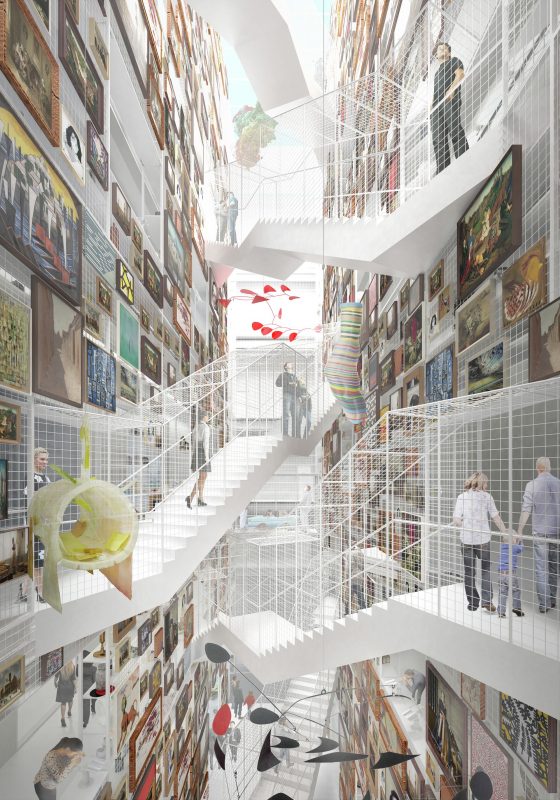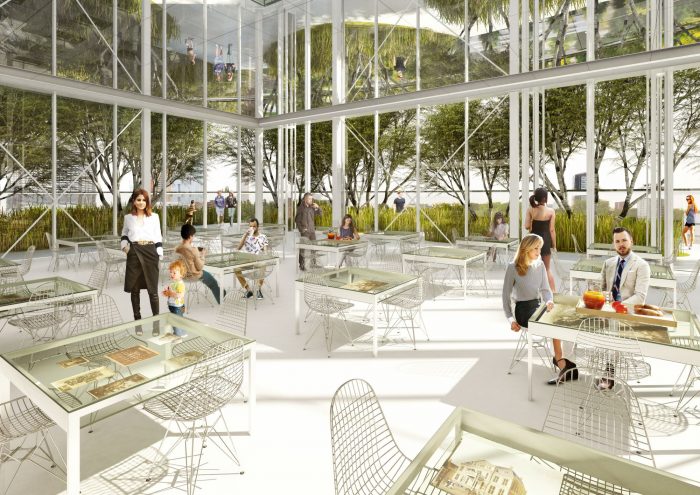Wunderkammer
In 2014, MVRDV unveiled designs for the Boijman’s new ‘public art depot’, which would sit adjacent to the institution in Museum park – the city’s cultural heart master planned by OMA and Yves Brunier in 1994. Petra Blaisse, a Landscape Architect and longtime Collaborator of Rem Koolhaas who was involved in the original masterplan, spoke out to argue that, “if I were the Boijmans and the municipality I’d reduce the building and completely re-design it“. With groundwater seeping into their frequently flooded subterranean storage spaces and priceless artworks separated from the rising damp by wooden pallets alone, the Boijman’s plans for a new permanent storage facility gained urgency in 2013. That year,
With groundwater seeping into their frequently flooded subterranean storage spaces and priceless artworks separated from the rising damp by wooden pallets alone, the Boijman’s plans for a new permanent storage facility gained urgency in 2013. That year, the city-organised an international competition which attracted proposals from Koen van Velsen, Harry Gugger Studio in partnership with Barcode Architects, Neutelings Riedijk and NIO architecten in partnership with MAD and OKRA.
MVRDV were ‘initially disqualified from the competition following an alleged breach of tender regulations’. It transpired that Sjarel Ex, Director of the Boijmans and a member of the jury, had been in conversation with Winy Maas (one of the practice’s three directors) during the competition phase. Maas objected to the ruling and, following an inquiry by Rotterdam’s Court of Justice, the practice was cleared of the accusations and allowed to compete. Yet the building’s design
Yet the building’s design is in harmony with the arrangement of the existing public space. In their words, “it is a compact round volume with a small footprint in order to spare the park“. Its reflective glass façade, seen by many critics as the most overpowering and technically dubious aspect of the building’s appearance will actually “make the building less visible“. To appease naysayers, the practice have added the caveat that, “the building’s reflection will be lesser for transparency and to avoid unwanted light effects“, lest they follow in the footprints of London’s 20 Fenchurch Street which, as a result of poor design, was labelled as the ‘walkie-scorchie’.
In an opinion piece by Maurice Blokhuis for Dafne (which, to maintain transparency, is an online magazine whose editor-in-chief also directs PR and business development at MVRDV) the controversies have been summarised. It first reports, that according to a recent city-led poll, around 60% of residents are in favour of the building and 20% are against. Secondly, among the neighbours of the depot, one of which is the Nieuwe Instituut (formerly the Netherlands Architecture Institute), the Erasmus Medical Centre are concerned that the building’s reflective facade will cause aggravation for patients and the children’s ward in particular. Finally, and perhaps most surprisingly, during a formal hearing the city’s “business community was pleading in favour of the building, the cultural institutions against it“.
Rotterdam will soon have a new cabinet of curiosities to add to its collection of architectural icons. For many years the city’s Museum Boijmans van Beuningen, originally established in 1849, has required a safer space to house its world-class collection of paintings, sculptures and prints – a collection which is said to have a total value of $7.5 billion. The Municipality of Rotterdam voted in favor of the building’s construction and, with zoning approved, the world’s first fully accessible art storage facility is now slated to open its doors in 2018.
